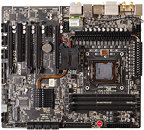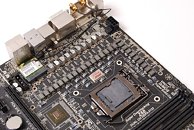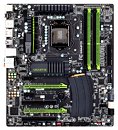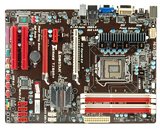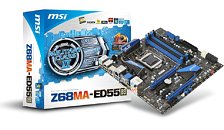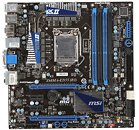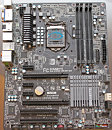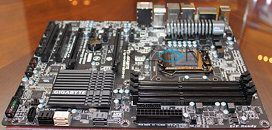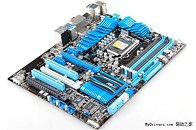Mouse Computer Announces Trio of High-End Desktops with Intel SSD 520
Major Japanese OEM Mouse Computer announced a trio of high-end desktop PCs that are built specifically around Intel's SSD 520 solid-state drives, launched a little earlier this week. These include the MDV-ASG8310B-SSD, the MDV-ASG8250B, and the MDV-AGG9320S-SSD. The MDV-ASG8310B-SSD and MDV-ASG8250B are both driven by Intel Core i7-2700K processor, based on Intel Z68 motherboard, with 8 GB (2x 4 GB) memory; while the former features NVIDIA GeForce GTX 550 Ti graphics, the latter has GeForce GTX 560. The MDV-AGG9320S-SSD is driven by six-core Intel Core i7-3930K processor, with 16 GB (4x 4 GB) memory, and GeForce GTX 570 graphics.
All three are built into the same chassis, featuring the same 23-inch full-HD display and peripherals. All three feature Intel's newly-launched SSD 520 solid-state drive with 120 GB capacity, the SSD is configured to hold the OS and program files, while all three further feature a slower 1 TB hard drive that handles documents and storage. DVD-RW, gigabit Ethernet, and Windows 7 Home Premium x64 make for the rest of the commonalities. The MDV-ASG8310B-SSD is priced at 99,750 JPY (US $1,300); the MDV-ASG8250B at 109,830 JPY ($1,432); and the MDV-AGG9320S-SSD at 159,600 JPY ($2,081).
All three are built into the same chassis, featuring the same 23-inch full-HD display and peripherals. All three feature Intel's newly-launched SSD 520 solid-state drive with 120 GB capacity, the SSD is configured to hold the OS and program files, while all three further feature a slower 1 TB hard drive that handles documents and storage. DVD-RW, gigabit Ethernet, and Windows 7 Home Premium x64 make for the rest of the commonalities. The MDV-ASG8310B-SSD is priced at 99,750 JPY (US $1,300); the MDV-ASG8250B at 109,830 JPY ($1,432); and the MDV-AGG9320S-SSD at 159,600 JPY ($2,081).




















